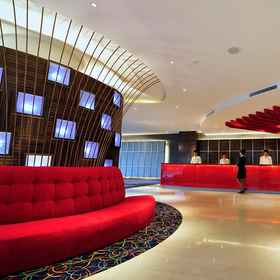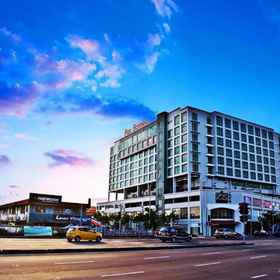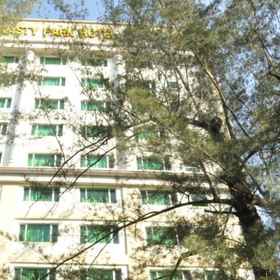
Hotels in Likas
- Hotel/
- Malaysia(12708 Hotels)/
- Sabah(1149 Hotels)/
- Kota Kinabalu(660 Hotels)
Destinations to Discover

Why Pay More
When You Can Pay Less?

No available hotels in Likas, Kota Kinabalu can be alternatives.
Discover what you like
Other hotels in Likas
Exclusive for new users—register today!
Up to RM 125 off Flights
8% off Hotels
8% off Attractions
10% off Car Rental
12% off Airport Transfer
About Likas
Likas is located in the Kota Kinabalu, Sabah, Malaysia. While Kota Kinabalu is the capital of Sabah, Likas is a sub-district within the jurisdiction of Kota Kinabalu. It is located on the west coast part of the state and emerging as a metropolitan area considering the placement of government centres, shopping complex, government and private hospitals as well as universities and colleges such as Universiti Malaysia Sabah. In the past, Kota Kinabalu is known as Jesselton which is named after Charles Jessel, the vice chair of the British North Borneo Company (BNBC).
Historically, it was under the influence of Bruneian Empire in 15th Century prior to BNBC founding colonies throughout North Borneo in the late 1800s. In 1899, Henry Walker has assigned a new settlement area which is opposite to Gaya Island as a replacement to the one at Gantian Bay which was built due to the destruction of Gaya Island by Mat Salleh in 1897. Jesselton eventually expanded from here to become a major trading post for goods from North Borneo. This went on for some time until war occurred with the Japanese and BNBC handed control over to the British government due to their running out of funds to perform reconstruction on the city. When North Borneo together with Sarawak, Singapore and Malay Federation formed Malaysia in 1963, it became Sabah and Jesselton is maintained as the capital. Then the State Legislative Assembly passed a bill in 1967 to rename Jesselton as Kota Kinabalu which comprises Likas as well.
How to Get There
From Kuala Lumpur International Airport, you can take flight on-board with the Malaysia Airlines or AirAsia for a direct flight to the Kota Kinabalu International Airport. Then you can take a taxi to Likas which would take up to 20 minutes journey.
Tourist Attractions
Puh Toh Tze Temple
The temple is located near the Jalan Tuaran end in Kota Kinabalu, being the largest of its kind in the state capital. Built in 1980, the architectural design accustoms closely to the classical Chinese temple style. At the entrance, the Kuan Yin Goddess statue awaits to grace its visitor. The temple is opened to public on a daily basis while Buddhist chants are scheduled twice a day. The admission is free as well.
Kota Kinabalu City Mosque
This mosque is located alongside the coastal lines of the Likas Bay facing the South China Sea. Initially the mosque is a beach area before being buried for construction purpose in 1989. It took several years to finish completion by year 2000. At one time, it can accommodate up till 12, 000 congregants. The architecture is based on the Nabawi Mosque in Madinah, being the pinnacle of Islamic contemporary art. The reflection coming from the bay gives a majestic sight of the white mosque. This is a must-visit spot for the tourists to snap a moment here.
Kota Kinabalu Wetlands
Kota Kinabalu Wetlands covers 24 hectares of mangrove forest which acts as model wetland centre for the purpose of conservation, education, recreation, tourism and research. Managed by the Sabah Wetlands Conservation Society, it is formerly known as Kota Kinabalu City Bird Sanctuary. There is a 1.5 kilometres boardwalk that brings the visitors further into the mangrove trees where one can see a unique behaviour of the area where land meets sea. The mangrove trees are a natural habitat of monitor lizards, fiddler crabs and many more. At least a 45-minute stroll on the boardwalk is a must to enjoy fresh air and the peaceful greenery – one can be lucky enough to spot interesting birds, plants and wildlife too. Almost 80 birds species have been identified at the sanctuary in present. The entrance fee is cheap and the rates are even better if you are a citizen – do not forget to bring your identification card to enjoy the rates. It is easily accessible from Likas, being situated not far from the Likas Square.
Facts about hotel in Likas
Total Accommodation | 200 Properties |
Popular Area | Likas |
Frequently asked questions

Why book Accommodation in Traveloka?



We’ve got more than just hotels
What interests you?






































 Facebook
Facebook Instagram
Instagram TikTok
TikTok Youtube
Youtube Twitter
Twitter Telegram
Telegram